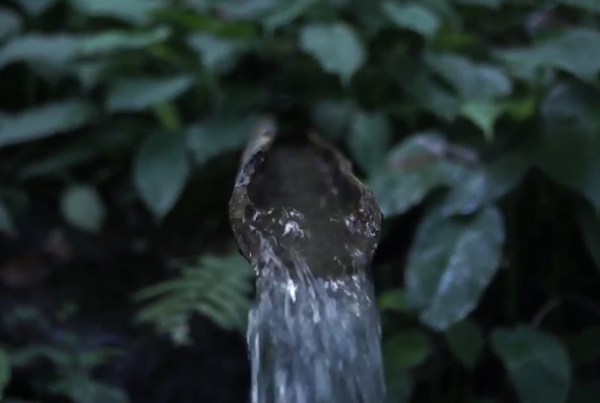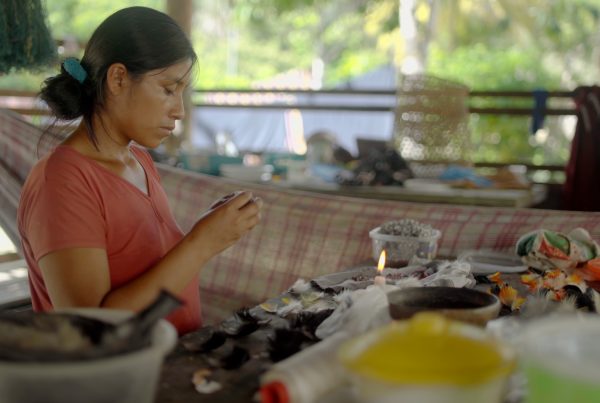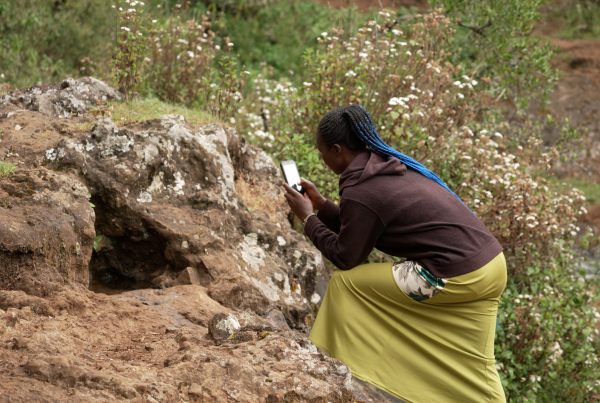- The world is facing unprecedented challenges from biodiversity loss and climate change, and one million species are at risk of extinction.
- Some of the world’s most biodiverse areas are found within the ancestral lands of indigenous peoples and local communities.
- More than a quarter of the global land area is traditionally owned, managed, used, or occupied by indigenous peoples, and has been for millennia.
Ahead of the UN Biodiversity Summit, more than 50 indigenous and community authors have contributed to a new report, providing their perspectives on what should be done to bend the curve of biodiversity loss and change our direction of travel. This report, the 2nd edition of Local Biodiversity Outlooks (LBO-2), is a landmark collaborative piece of research and analysis, and acts as a sister publication to the 5th edition of the Global Biodiversity Outlook.
Elizabeth Maruma Mrema, Executive Secretary of the UN Secretariat of the Convention on Biological Diversity, said:
“LBO-2 embodies an optimism that the destruction of Nature and the dramatic loss of biodiversity and cultural diversity can be successfully reversed, by embracing the values, and building on the collective and local actions of the World’s indigenous peoples and local communities.”

A Fulani family watering seedlings in Mali. Credit: Giacomo Pirozzi.
The LBO-2 publication assesses progress against all 20 Aichi Biodiversity Targets which expressed global ambitions between 2011 and 2020. It finds that the contributions of indigenous peoples and local communities have too often been neglected and marginalised, signifying global underachievement in meeting a majority of these goals.
In a statement, the International Indigenous Forum on Biodiversity said, “In order to bend the curve of biodiversity loss, we need to bend the curve of inequality and ensure the equitable sharing of benefits and costs. To achieve the vision 2050, there is a need for a paradigm shift in terms of values at the core of society that influence their behaviour for a transformation towards a responsible and sustainable society.”
The authors of this publication argue that future global biodiversity goals must embed the vital role of indigenous peoples and local communities in protecting biological and cultural diversity.
The Intergovernmental Panel on Biodiversity and Ecosystem Services (IPBES) Global Assessment Report on the state of the world’s biodiversity stated that “nature managed by indigenous peoples and local communities is under increasing pressure…but declining less rapidly than in other areas of the world.”
Increasingly, these ‘islands’ of great biological and cultural diversity found on indigenous and local community lands are being surrounded by declining resilience in vast tracts of the earth. This difference in biodiversity directly corelates with the value systems through which societies view nature.
“Indigenous peoples don’t see nature as separate from people,” said Lakpa Nuri Sherpa of the Asia Indigenous Peoples Pact (AIPP) and member of International Indigenous Forum on Biodiversity (IIFB).
“We interact with nature every day, and we think carefully how we manage our resources – we have spiritual and sacred relationships with our natural resources, which means we must manage our lands in a sustainable way so we can pass it on to the next generation.
“For this reason, we must continue to fight for the rights to our lands, territories and resources – if we don’t have rights, if we are attacked, we cannot protect our forests – they take the resources from our lands, but we care for these lands.
“Without security for our collective land rights, the land can be exploited, nature loses out, and there’s nothing to pass on to the next generation,” he said.
This link to security of tenure is threaded through the findings in LBO-2, highlighting that protecting biodiversity at all scales must embed indigenous peoples’ and local communities’ own territories and systems of governance and management.
The LBO-2 reveals local solutions to the pressing global challenges, developed, implemented and sustained by indigenous peoples and communities.
“Indigenous peoples’ values and knowledge provide insights for reciprocal human-nature relationships amidst the crisis of biodiversity loss and climate change,” said Joji Cariño, (Philippines) of Forest Peoples Programme, representing Centres of Distinction on Indigenous and Local Knowledge and a Member of IIFB.
“Biodiversity needs the voices of indigenous peoples,” she said. “Putting the cultures and rights of IPLCs at the heart of the 2050 biodiversity strategy would deliver sustainable livelihoods and wellbeing, and positive outcomes for biodiversity and climate.”
LBO-2 is released during crucial negotiations towards a post-2020 global biodiversity framework, and the findings presented here are of fundamental importance to the outcome of those negotiations. The authors demonstrate through grounded cases that effective conservation and restoration of our natural world happens through a mosaic of locally tested and proven systems of sustainable use. And this contributes to resilience, where locally grounded food systems can provide sustainable and nutritious food for our families and communities in good times and bad times. But support for these solutions is needed.
“In order for the 2050 vision to be successful, the contribution of all sectors must be taken into account,” said Ramiro Batzin, Co-Coordinator of the IIFB. “In our case, it must be in line with indigenous worldviews that place emphasis on the intrinsic relationship between human beings, Mother Nature and the universe, and the essential link that exists between nature and culture.”
Background
The Global Biodiversity Outlook 5 (GBO5), published by the UN Convention on Biological Diversity (CBD), offers an authoritative overview of the state of nature. It is a final report card on progress against 20 global biodiversity goals agreed to in 2010 with a 2020 deadline, and offers lessons learned for getting on track.
Local Biodiversity Outlooks (LBO-2) presents the perspectives and experiences of indigenous peoples and local communities (IPLCs) on the current social-ecological crisis, and their contributions to the implementation of the Strategic Plan for Biodiversity 2011–2020 and to the renewal of nature and cultures. The first edition (LBO-1) was produced in 2016 as a complement to the fourth edition of the Global Biodiversity Outlook (GBO-4) and has become a key source of evidence about the actions and contributions of IPLCs towards achieving the objectives of the Convention on Biological Diversity.
Following up on the publication of the first global assessment of nature and biodiversity in 2019, which suggested that IPLC lands are ‘islands of nature in a sea of decline’, this publication points to the reasons for these slower rates of decline and provides powerful recommendations about how to support these local efforts and to re-think our global relationships with our planet.
The 2nd edition of Local Biodiversity Outlooks also addresses transformation towards a more reciprocal and balanced relationships between humans and nature. Outlining 6 key transitions underpinning such a journey, the report provides concrete and real steps that can be taken towards meeting biodiversity goals and our global commitments on climate change and on sustainable development.
Note to media outlets
Panellists and experts from this session are available for interview. Images are available on request. Please contact: Tom Dixon, Communications Manager, Forest Peoples Programme (tdixon@forestpeoples.org / +44 7876 397915)
We will be holding a full press briefing on LBO-2 on 23 September, where contributing authors and experts will be available for comment: Please register here for the press briefing.



